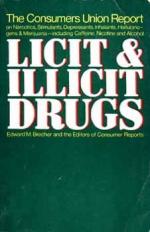|
This section contains 1,699 words (approx. 6 pages at 300 words per page) |

|
Inhalants are solvents or anesthetics that are administered by being breathed in. Examples include paint thinners, glues, hair sprays, spray paints, lighter fluids, nitrous oxide, propane, and nitrites. When these substances are purposely inhaled (breathed in) for the purpose of obtaining a "high," they become drugs of abuse. Most have a depressant effect on the central nervous system, but some cause seizures (wild discharges of electricity in the brain that can cause unconsciousness and involuntary jerking of the muscles). Inhalants are possibly the most toxic (poisonous and dangerous) of abused substances and can produce a wide range of injuries and death, depending on the chemical makeup of what is inhaled. Because inhalants are not intended for human consumption, no tests are performed to determine how safe they are, in contrast with safety testing conducted on medications intended for human use.
 In Cambodia, a young boy attempts to get...
In Cambodia, a young boy attempts to get...|
This section contains 1,699 words (approx. 6 pages at 300 words per page) |

|


